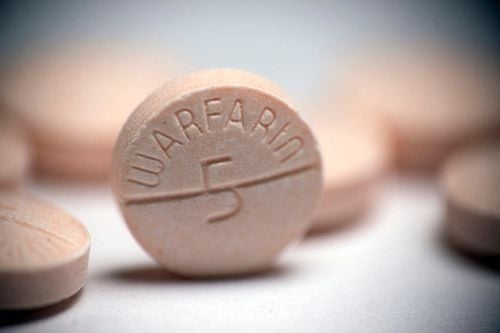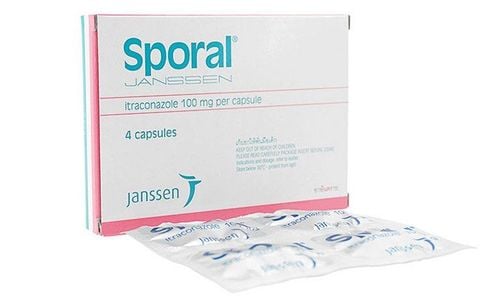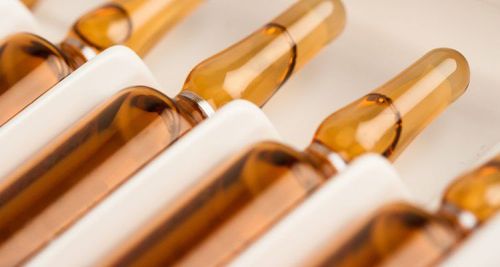This is an automatically translated article.
Amphotec is an antifungal drug, sensitive to almost all fungi. This drug is used in cases of severe fungal infections, potentially fatal, fungal infections with immunocompromised cases.
1. Uses of Amphotec
Amphotec brand name drug of Amphotericin B cholesteryl, that is, the main active ingredient with therapeutic effect is Amphotericin B cholesteryl.
Amphotericin B cholesteryl complex is an antifungal drug. Because the oral form of Amphotericin B is difficult to absorb from the gastrointestinal tract, this antifungal drug is often formulated as a lipid complex for intravenous administration and reduces the toxicity of the drug to the body.
Amphotec is used to help the body overcome serious fungal infections, potentially life-threatening fungal infections in immunocompromised patients, taking antibiotics for a while.
Main active ingredient Amphotericin B cholesteryl is an antifungal drug that binds to sterols in cell membranes to kill fungi. Because it is toxic to the body, it should only be used when absolutely necessary, not in cases of mild fungal infections.
2. Usage and dosage of Amphotec
How to use the drug:
The drug is prepared as an intravenous infusion, so it should be administered by medical staff. The duration of this infusion should not be less than 1 hour and the usual duration is 2 to 6 hours. Because unusual symptoms may increase with rapid infusion, even a shock reaction may occur. Infusion-related reactions, such as fever and chills, were reported in 35% of patients. Symptoms usually begin within 1 to 3 hours after the initiation of amphotericin B cholesteryl sulfate infusion and subside with subsequent infusions. To reduce the risk of this effect, it is necessary to reduce the infusion rate and monitor other signs for timely treatment. The manufacturer's instructions should be strictly followed when mixing. Do not arbitrarily use an alternative intravenous solution that is not recommended by the manufacturer. Before taking the drug should be tested to determine whether the patient is allergic to the drug or not. Dosage in Adults:
Usual Dose for Invasive Aspergillosis: Initial dose 3 to 4 mg/kg body weight every 24 hours, in some cases may be increased to 6 mg/kg body weight per day. 24 hours if there is no improvement or if there is evidence of fungal progression. The duration of use depends on the patient's response. Usual dose for candidiasis: Initial dose of 3 to 4 mg/kg body weight intravenously every 24 hours. The dose may be increased to 6 mg/kg body weight every 24 hours if there is no improvement or if there is evidence of progression of fungal infection. Usual dose for febrile neutropenia and histoplasmosis: Initial dose 3 to 4 mg/kg body weight intravenously every 24 hours. The dose may be increased to 6 mg/kg body weight every 24 hours if there is no improvement or if there is evidence of progression of fungal infection. The total duration and dose depends on the nature and severity of the infection and the patient's tolerance to amphotericin B cholesteryl sulfate. Usual Leishmaniasis Dose: Initial dose is 2 mg/kg body weight IV every 24 hours. The duration of amphotericin B cholesteryl sulfate treatment for visceral leishmaniasis is within 10 days. Dosage for children:
In case of severe fungal infections, children can still be prescribed. However, the use of the drug in children should be very cautious because of the risk of overdose. It is necessary to calculate the appropriate dose, this will be calculated by the specialist doctor and given the appropriate indication for the child. Note Overdose: Overdose can occur, so determining the dose is very important. Overdose can cause circulatory arrest, respiratory arrest, especially in children, which is life-threatening.
3. Side effects when taking Amphotec
Some of the side effects you may experience while taking Amphotec include:
Some common side effects: Chills, fever, headache, muscle or joint pain; Isochromic anemia, normal and reversible red blood cell size; Digestive disorders, abdominal pain, diarrhea, nausea, vomiting, loss of appetite; hypokalemia, hypomagnesemia; Decreased renal function accompanied by increased creatinine and blood urea nitrogen; Thrombophlebitis, multiple and injection site irritation. Some less common side effects Permanent kidney damage, especially in people who infuse high doses of more than 5 g Amphotericin B. Rare side effects: Blurred or double vision, convulsions, numbness, tingling, pain or weakness in the hands or feet, hypotension, ventricular fibrillation, shortness of breath, wheezing or tightness in the chest, tingling, muscle pain or weakness, thrombocytopenia, agranulocytosis, urinary retention after intramedullary injection Life... Inform your doctor if the following side effects persist or make you feel uncomfortable: Diarrhea, headache, indigestion, loss of appetite, nausea or vomiting, abdominal pain ; with spinal injection causes back pain, leg pain, neck pain, dizziness or lightheadedness... Tell your doctor if you experience any of the above side effects or other symptoms that you think are caused by taking this drug.
4. Some things to keep in mind when using Amphotec
Do not use Amphotec when you have a history of allergy to the drug, skin test has allergic manifestations, be cautious and closely monitor the test index with patients with renal failure.
This drug is used under a doctor's prescription, only used when the patient in the hospital has adequate emergency facilities. Because the first time using the drug there is a risk of dangerous adverse reactions occurring, especially 1 to 3 hours after the infusion.
Inform your doctor before taking the medicine if you are allergic to any antigens, have kidney disease, are taking other medications, are pregnant or breast-feeding.
The use of drugs for pregnant and lactating women is unknown risk and safety level. Therefore, do not use this drug unless absolutely necessary and should be carefully considered before using.
When taking the drug, the patient needs to monitor the liver and kidney function, check the blood count regularly 2-3 times a day to detect the risk of side effects early.
Elderly people are at risk of decreased kidney function, so when using it, it is necessary to pay attention to kidney function.
Drug interactions that may occur when taking concomitant drugs include:
Nephrotoxic drugs such as Aminoglycoside antibiotics, Capreomycin, Colistin, Cisplatin, Cyclosporine, Methoxyflurane, Pentamidine, Polymyxin B, Vancomycin: Usually the combination must be avoided. concurrently with amphotericin B because of the risk of serious renal side effects. Drugs that reduce blood potassium (cardiac glycosides, tubocurarin, diuretics...) if used concurrently with amphotericin B will increase the risk of dangerous hypokalemia. Other antifungal agents: Concomitant use may increase the antifungal effect. But there may be an increased risk of side effects. Should be used with caution. Anti-inflammatory steroids: Corticosteroids can increase the severity of fungal infections because they cause immunosuppression and increase the risk of hypokalemia. Use only to treat the side effects of Amphotec if necessary. Amphotec is an antifungal drug that has a very strong effect, but at the same time with such a strong effect comes the risk of harm to the body. Therefore, it is only used when a fungal infection is life-threatening. You should only use it when the benefits and risks of harm have been carefully weighed.
Please dial HOTLINE for more information or register for an appointment HERE. Download MyVinmec app to make appointments faster and to manage your bookings easily.
Reference source: drugs.com













